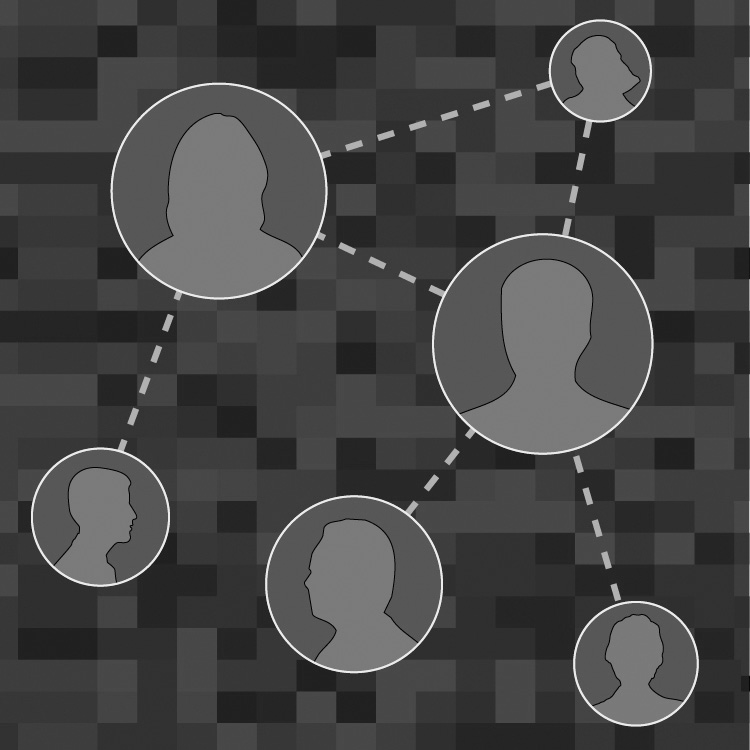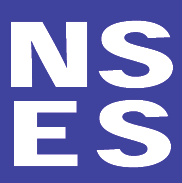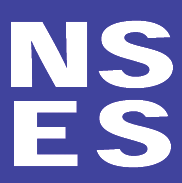
Activity 2: Clinical Trials
Estimated time: 50 minutes
Page and Step
Display Master 4.6. Ask volunteers to read it aloud.
Page 107
Step 1
1
Explain that doctors compare the effectiveness of cancer
Page 107
treatments by looking at the percentages of patients still alive
Step 2
after five years.
Explain that students will go back to the year 1970 and assume
Page 107
the roles of doctors trying to improve the survival rates of
Step 3
children with leukemia by conducting a clinical trial.
Give each student pair a copy of Master 4.7. Explain that it
Page 107
describes the treatment options they can include in their clinical
Step 4
trial.
2
Explain that student pairs will use computers to design and carry Page 108
out their clinical trial. Explain that
Step 5-w
• The standard therapy is a combination of the standard
doses of drugs A, B, and C.
• Pairs will select drug doses and the use or nonuse of the
central nervous system treatment.
• They will submit the design for approval. Once approved, the
trial will be carried out and students will learn the results.
Give each pair a copy of Master 4.8 . Instruct students to record Page 109
3
their treatment options, trial results, and conclusions on it.
Step 6-w
Explain that in a clinical trial such as this, the experimental
Page 109
treatment is compared with the standard treatment. Ask, “Should Step 7-w the clinical trial also include a group that receives no treatment?”
Direct students to their computers and instruct them to click
Page 109
on “Activity 2: Clinical Trials.” Student pairs should select the
Steps 8-w
treatments and then click “Submit.”
and 9-w
• If approved, students can click “Run treatment” and learn
4
the results.
• If rejected, students can redesign the trial.
• After recording the trial results, students should make and
record their conclusions.
Reconvene the class. Ask volunteers to report the designs and
Page 112
results of the trials and how their treatment compared with the
Step 10
standard treatment.
5
Lesson 4
117


Give each student a copy of Master 4.9 and explain that this is
Page 112
what the doctor showed Hanna’s parents to help them see how
Step 11
effective clinical trials have been in improving survival rates of
children with leukemia.
Remind students of the Web search they performed about
Page 112
leukemia. Ask, “What other results from the Web search
Step 12
could provide us with a different perspective about childhood
leukemia?”
Conclude the lesson by explaining that students will watch
Page 113
a brief video created by a young woman who is a leukemia
Step 13-w
survivor. Ask students to write in their notebooks some
questions they would like to ask the young woman about her
experiences.
Instruct students to click on “Activity 2: Hailey’s Story” and watch Page 113
the video.
Step 14-w
Reconvene the class and ask volunteers to describe their
Page 113
reactions to the video and to explain how it addressed (or did
Step 15-w
not address) the questions they wrote in their notebooks.
= Involves making a transparency.
= Involves copying a master.
= Involves using the Internet.
118
Rare Diseases and Scientific Inquiry
Lesson 4 Organizer: Print Version
Activity 1: An Unwelcome Diagnosis
Estimated time: 100 minutes
Page and Step
1
Explain that students will explore a case study of a child who has a
Page 98
rare disease.
Steps 1
• Display Master 4.1.
and 2
• Ask volunteers to read paragraphs aloud to the class.
Ask, “What would you do now that you have learned that your
Page 98
daughter has been diagnosed with leukemia?”
Step 3
Explain that after the upsetting visit to the doctor, Jason and Kim
Page 98
performed an Internet search on leukemia.
Step 4
Ask students:
Page 99
2
• “If you were Hanna’s parent, what information would you want to
Step 5
have about the disease?”
• “Where could you find that information?”
Give each student one copy of Masters 4.2 and 4.3. Instruct students Page 99
to rank on Master 4.3 the usefulness of the hits listed on Master 4.2.
Step 6
Display Master 4.3. Ask volunteers to report how they ranked the Web Page 101
hits.
Step 7
Arrange the class in pairs. Give each pair a copy of Masters 4.4 and Page 102
3
4.10. Ask students to read Master 4.10 and summarize the information Steps 8-p
on Master 4.4.
and 9-p
Reconvene the class and ask whether students have questions about
Page 102
the information from the Web hits.
Step 10
Remind students about the three general causes of disease. Ask, “What Page 103
types of information would you want to have in order to decide which
Steps 11 and 12
of the three causes of disease applies to leukemia?”
Explain that Jason and Kim have two children: Hanna, who has
Page 103
leukemia, and Rick, her healthy older brother. Also, say that there’s no Steps 13 and 14
4
history of leukemia in the family. Ask,
• “Does this rule out genetics as the cause of leukemia?”
• “What about environmental exposure or infections?”
Acknowledge that so far, there isn’t good evidence to suggest a cause
Page 103
for Hanna’s leukemia. Remind students about the Animation about
Step 15
Leukemia. Ask, “What happened to a stem cell that led to leukemia?”
5
Lesson 4
119
Explain that new mutations happen from exposure to sunlight and
Page 103
substances in the environment or from an uncorrected DNA-copying
Step 16
mistake. Mutations in genes associated with cell growth can lead to
cancer.
Explain that mutations can affect the number and appearance of
Page 104
chromosomes and that a photograph of chromosomes under a
Step 17
microscope is a karyotype. Give each student a copy of Master 4.5.
Instruct students to read Master 4.5 and answer the question at the Page 104
bottom. Explain that in leukemia, we expect a karyotype to show
Steps 18 and 19
three, not two, copies of at least one of the numbered (nonsex)
chromosomes.
Explain that students will now view karyotypes from Hanna and her
Page 106
immediate family. Ask students to predict whether each karyotype will
Step 20-p
appear normal or abnormal and to record in their notebooks whether
the evidence supports the predictions.
Give each student pair a copy of Master 4.11. Ask them to note
Page 106
whether their predictions were confirmed.
Step 21-p
Explain that students will now look at three different karyotypes from
Page 106
Hanna: from her blood, cheek, and hair follicles. Ask pairs to predict
Step 22a-p
how each karyotype will appear and to record their predictions.
Give each student pair a copy of Master 4.12. Ask students to note Page 106
whether their predictions were confirmed.
Step 22b-p
Ask, “How can you account for the appearance of the karyotypes taken
Page 106
from these three different tissues?”
Step 23-p
120
Rare Diseases and Scientific Inquiry
Activity 2: Clinical Trials
Estimated time: 50 minutes
Page and Step
Display Master 4.6. Ask volunteers to read it aloud.
Page 107
Step 1
1
Explain that doctors compare the effectiveness of cancer treatments by
Page 107
looking at the percentages of patients still alive
Step 2
after five years.
Explain that students will go back to the year 1970 and assume the
Page 107
roles of doctors trying to improve the survival rates of children with
Step 3
leukemia by conducting a clinical trial.
Give each student pair a copy of Master 4.7. Explain that it describes Page 107
the treatment options they can include in their trial.
Step 4
Tell students that they will work in their pairs to design and carry out a Page 110
2
clinical trial. Explain that
Step 5-p
• the standard therapy is a combination of the standard doses of
drugs A, B, and C,
• pairs will select drug doses and the use or nonuse of the central
nervous system treatment, and
• they will submit the design to you for analysis.
Explain that in clinical trials, an experimental treatment is compared
Page 110
with the standard treatment. Ask, “Should the clinical trial also include Step 6-p
a group that receives no treatment?”
3
Give each pair a copy of Master 4.8 . Instruct students to record on it Page 111
the treatment options they select, and then to submit it to you. Explain Steps 7a-p
what an Institutional Review Board is, and check that student designs
and 7b-p
test only one variable.
Once you’ve approved all the clinical trial designs, give each student
Page 111
pair the appropriate handout (Master 4.13, 4.14, 4.15, Step 8-p
or 4.16)
Ask student pairs to summarize the data and their conclusions and
Page 111
reasoning on Master 4.8.
Step 9-p
4
Reconvene the class and ask volunteers to report which treatment they Page 112
used and whether it was better than the standard one.
Step 10
Give each student a copy of Master 4.9 and explain that this is what Page 112
the doctor showed Hanna’s parents to help them see how effective
Step 11
clinical trials have been in improving survival rates of children with
leukemia.
Remind students of the Web search they performed about leukemia.
Page 112
Ask, “What other results from the Web search could give us a different
Step 12
perspective about childhood leukemia?”
5
Lesson 4
121
Acknowledge that blogs and videos by cancer survivors can offer
Page 114
important perspectives on what it’s like to live with that illness.
Step 13-p
Conclude by explaining that the class will conduct a brief interview
with a high school senior who was diagnosed with leukemia in eighth
grade.
Ask for one volunteer to play Hailey and one to play the interviewer,
Page 114
give each of them a copy of Master 4.17, and have them conduct the Steps 14-p
interview in front of the class.
and 15-p
Ask volunteers to describe their reactions to the interview.
Page 114
Step 16-p
= Involves making a transparency.
= Involves copying a master.
122
Rare Diseases and Scientific Inquiry


Lesson 5
Communicating about Rare Diseases
1
2
Evaluate
At a Glance
Overview
Lesson 5 gives students the opportunity to reflect on what they have
3
learned about rare diseases and scientific inquiry during this supplement.
Students role-play staff members of a patient-support organization and
are tasked with creating informational posters for the public about Marfan syndrome and childhood leukemia. After students create the posters, they evaluate another poster for a different disease. Finally, students return to the reality TV show scenario that began the supplement. They revisit their initial ideas about rare disease and their attitudes toward people affected by them. They reexamine their answers to the questions about rare diseases posed in Lesson 1 and discuss how their thinking has changed.
4
Major Concepts
• Diseases have three main causes:
– genetics
– environmental exposure
– infectious agents
• Rare diseases may become common, and common diseases may become
rare.
• Some rare diseases can be cured, while many others can be managed
through treatment.
• People with rare diseases must sometimes cope with the stigma
associated with their condition.
5
123
Objectives
After completing this lesson, students will have
• revisited their preconceptions about the nature of disease in light of scientific conceptions,
• summarized information about childhood leukemia and Marfan
syndrome, and
• considered their feelings about people affected by rare diseases.
Teacher Background
Consult the following sections in Information about Rare Diseases and
Scientific Inquiry:
2.0 The Impact of Genomics on Rare Diseases (pages 24–26)
3.0 Rare Infectious Diseases (page 26)
4.0 Rare Diseases Caused by Environmental Toxins (pages 27–28)
5.1 Necrotizing Fasciitis (pages 28–29)
5.2 Marfan Syndrome (pages 29–31)
5.3 Childhood Leukemia (pages 31–33)
In Advance
Web-Based Activities
Activity
Web Component?
1
No
2
Yes
Photocopies, Transparencies, Equipment, and Materials
Photocopies and Transparencies
Activity 1: Creating an Informational Poster
1 transparency and 1 copy of Master 5.1 for each student pair
1 copy of Master 5.2 for each student pair addressing Marfan
syndrome
1 copy of Master 5.3 for each student pair addressing childhood
leukemia
1 transparency and 1 copy for each student pair of Master 5.4
1 copy of Master 5.5 for each student pair
Activity 2: Reflecting on Rare Diseases
For Classes Using the Web-Based Version
1 copy of Master 5.6 for each student
Continued
124
Rare Diseases and Scientific Inquiry

Photocopies and Transparencies
Activity 2: Reflecting on Rare Diseases
For Classes Using the Print-Based Version
1 copy of Master 5.6 for each student
1 transparency of Master 5.7
1
Equipment and Materials
For Activity 1, students will need chart paper and colored marking pens.
For Activity 2, Web-based version, students will need computers with Internet access.
Preparation
Activity 1
Gather chart paper and colored marking pens for each student pair. Make photocopies and transparencies.
2
Activity 2
For classrooms using the Web version, verify that the
computer lab is reserved for your class or that classroom
computers are set up for the activities. Refer to Using the
Web Site for details about the site. Check that the Internet
connection is working properly.
Log on to the Web Portion of Student Activities section of the site at
3
http://science.education.nih.gov/supplements/rarediseases/student
Select “Lesson 5: Communicating about Rare Diseases” so students can
begin the activity right away.
Procedure
Activity 1: Creating an Informational Poster
4
Estimated time: 50 minutes
Note: This is an Evaluate lesson. It’s not designed to teach new content but rather to give you a chance to assess how well students
have learned the major concepts about rare diseases and scientific
inquiry.
1.
Begin by explaining that in this final lesson of the supplement,
students will play the roles of staff members working for an
5
Lesson 5
125


organization that informs and support patients with rare
diseases and their families. Explain the following:
• Many rare diseases have support groups that raise awareness
and money to support research about the disease.
• The task is for pairs to prepare informational posters that
Content Standard C:
explain important aspects of a rare disease to patients, family
Disease is a
members, and other interested people.
breakdown in
structures of functions
Students may feel unqualified to prepare informational posters
of an organism. Some
about rare diseases. You can explain that the posters will deal with
diseases are the result
the rare diseases they have been studying. Furthermore, the goal
of the poster is to communicate information to the public, so the
of intrinsic failures of
posters should use language that everyone can understand.
the system. Others are
the result of damage
2.
Arrange students into pairs again. Explain that each pair will
by infection by other
create a poster about childhood leukemia or Marfan syndrome.
organisms.
Assign half of the pairs to childhood leukemia and the other
half to Marfan syndrome. Explain that after each pair creates a
poster, they will evaluate a poster about the other rare disease.
You may allow student pairs to select the disease they prefer. If
selections heavily favor one disease over the other, you may need to
instruct some pairs to switch diseases to maintain a balance between
the two.
Tip from the field test: If your classroom has the
technical capacity, consider allowing students to create
a PowerPoint presentation instead of a poster.
3.
Display Master 5.1, Guidelines for the Poster, and give each pair a copy to use as a reference. Explain that the handout lists
Content Standard A:
the types of information that should be in the poster. Briefly
Students should base
go over the items on the handout and answer any questions
their explanations on
students have.
what they observed,
and as they develop
Make sure that students have access to the notebooks that contain
cognitive skills,
their work from previous lessons. This work will help students
complete the first part of the poster.
they should be
able to differentiate
Note: The purpose of this activity is to assess students’ learning from the explanation from
previous lessons. Therefore, do not allow students to conduct a research description—proving
project using the Internet or other outside resources.
causes for effects
and establishing
4.
Explain that the second part of the poster will contain a brief
summary of a recent clinical trial or research study about the
relationships based











